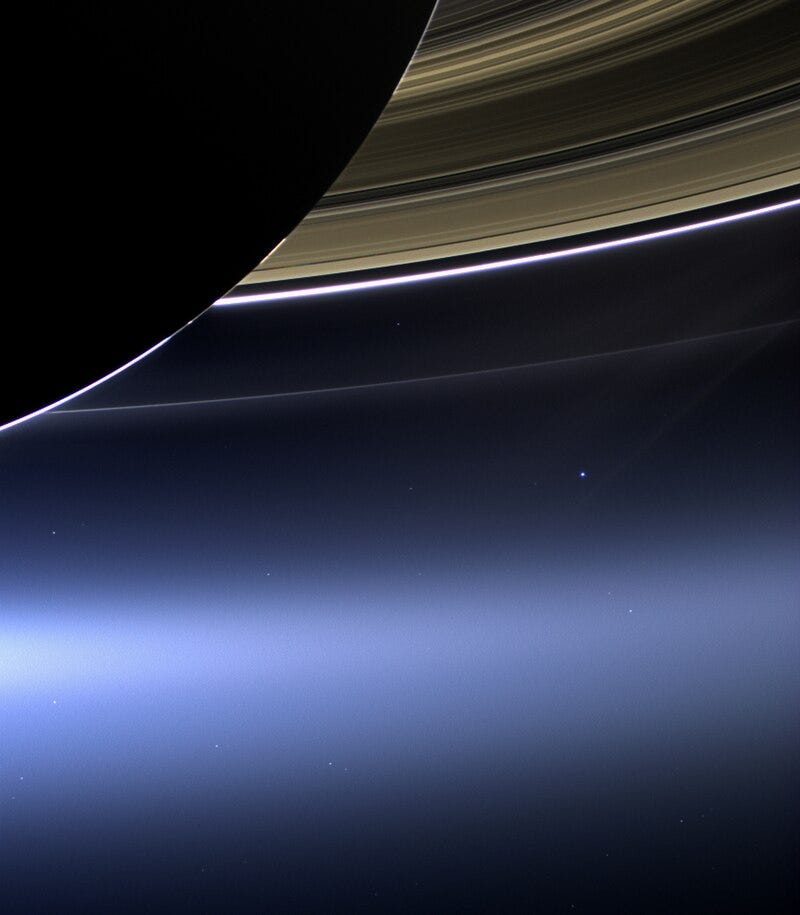It’s been a noisy few weeks, hasn’t it? Sometimes it’s felt like I’ve been drowning in a storm surge of takes and thought pieces and rants and memes (not to mention emotion). All the time it’s been difficult to find any coherency in the din — both outside and inside my brain — let along know what to contribute.
I’ve put in a lot of work this week on an essay I was hoping to post today. An essay that, as of now, is sitting in some rubble pile of a google doc, three thousand words of incoherent gobbling. Seems about right, doesn’t it?
So in leu of that, I’d like to share a small highlight of my last week. Last Saturday we had an event called Banjo Astro After Dark, where 8 local song writers wrote songs about an astronomy focused theme, “Signal in the Noise” and performed them interspersed with 8 short astronomy vignettes I’d prepared for reflection. People turned out for the event, and I think I was unprepared for the awesomeness of the songwriter’s work, and the wonderful feeling of community - that we’re all in this together.
So for this week, I thought I would share a little snippet from the event, maybe just a little signal in all the noise. Below is a cleaned up version of the final vignette, a short reflection on signal, noise, and hope, which somehow seems apropos for this particular moment.
(I’ve also included a somewhat grainy cell phone video, if you’d like to listen to my stumbling live version).

To close out there are two pictures that I want to show you that are pictures that have been meaningful to me in my study of astronomy.
The first one is a picture of the planet Saturn, taken with the Cassini orbiter, which orbited Saturn for about 20 years until they finally crashed it into the planet in 2017. (I have clear memories of the 6am goodbye party we through for it at my university, sharing donuts, waiting for loss of signal. It had an amazing life, revolutionizing our understanding of Saturn and its moons, and yet it was still hard to say goodbye.)
This particular picture is taken from behind Saturn, so it’s backlit by the sun. You can see the beauty of its rings; one of Cassini’s key discoveries is that Saturn’s rings are comparatively young, and short lived, astronomically speaking. Cassini’s images determined that the rings are slowly loosing mass through a process called “ring rain” - the rings’ slow tears fill Saturn’s atmosphere, and in a mere 100 - 300 million years will run dry. That we live at a time when they are visible is a coincidental blessing indeed.
But that’s not the main reason I wanted to show this picture. Another thing that’s special is that Saturn is not the only planet pictured here. In the lower right corner, between the hazy “G ring” and the brighter main rings is a tiny tiny dot. That dot - that's Earth. That's us. If you're having trouble seeing it, well, be glad they multiplied earth's brightness by about 8.5 to make it a little more visible for you.
Some of the inspiration for this picture was an image take by the Voyager spacecraft decades earlier, spearheaded by Carl Sagan, showing earth as the tiniest pale blue from this distance. Some of the point is that it's really hard to comprehend how much space there is out there. If you took the sun and shrunk it down to the size of a basketball, Earth would fit on the end of a pencil on the other side of the room here, everything else is just empty (mostly), and Pluto would be over by the Irving Park Brown line (about a mile away), a little dot out there. And the next “basketball,” Alpha Centauri, our closest star, is hanging out in Hawaii, and everything else is just this empty space.

It’s humbling, and can make us wonder about our (in)significance. And yet, when they took this picture, they hosted a bunch of wave at the camera events down on earth. People all over our globe, kids and the elderly, astronomers, and non-astronomer. Afterwards NASA made a photomosaic of just 1,600 of the faces of people waving at the camera. And looking at that mosaic, all the little dots combined so that, when you zoom out the planetary image comes through - I can’t help but think: for all the paleness and smallness of our little dot, there sure is a lot of signal there.
One last thing I wanted to say.
This is another meaningful picture to me, something called the Hubble Deep Field. Time on the Hubble Space Telescope was (and remains) very competitive - every astronomer wanted to use it for their projects, and there wasn’t nearly enough time to look at everything everyone wanted to see. Everyone had all these really interesting things they wanted to study, but there was only one Hubble, and thousands of astronomers. Many wouldn’t get their shot. Yet a couple of astronomers had this crazy idea and said well what if we took Hubble, our most powerful telescope and pointed it at a blank spot in space and just stared, for maybe a month. Many astronomers were like, no, that's an awful idea, we have things we have to do with this telescope! Not to mention it's really expensive!
But the director at the time had something called the director's discretionary time, a little bit of time that he could just choose where to point the telescope. And he decided, no, we're going to point the telescope at this one blank spot in space where nobody's ever seen anything there.
So they pointed it there for a few weeks, and this picture is what they found. This picture has thousands of galaxies, stretching back to the earliest epochs of the universe, over 13 billion lightyears away. (Remember, a lightyear is the distance light travels in a year, light can go around the earth 7 times in every second, so yeah, that’s a little ways away). The picture revolutionized our understanding of the universe, what's out there, and it’s history. To look far away in space is to look back in time (since light takes time to get to us): all these different galaxies is a beautiful little snapshot of our universe through time, the amazing variety that’s out there. It’s a good thing they had the courage to look.
I wanted to show this picture because this week I've been thinking a lot about the concept of hope. And I've been realizing that I don't always actually have a good framing on hope. We live in a universe with a lot of noise and a lot of empty space, and sometimes I think hope is the little glimpses I see in the static, or potential signals I get excited about.
But this week I've been thinking that I don't think that's right. I think hope has less to do with the glimpses or the light rays, and more with how we approach the noise, and the fact that we keep on looking.
What was it my sister sent to me this week? From Andrea Gibson: “even when the truth isn’t hopeful, the telling of it is.” This week: we keep writing, we keep looking up.






